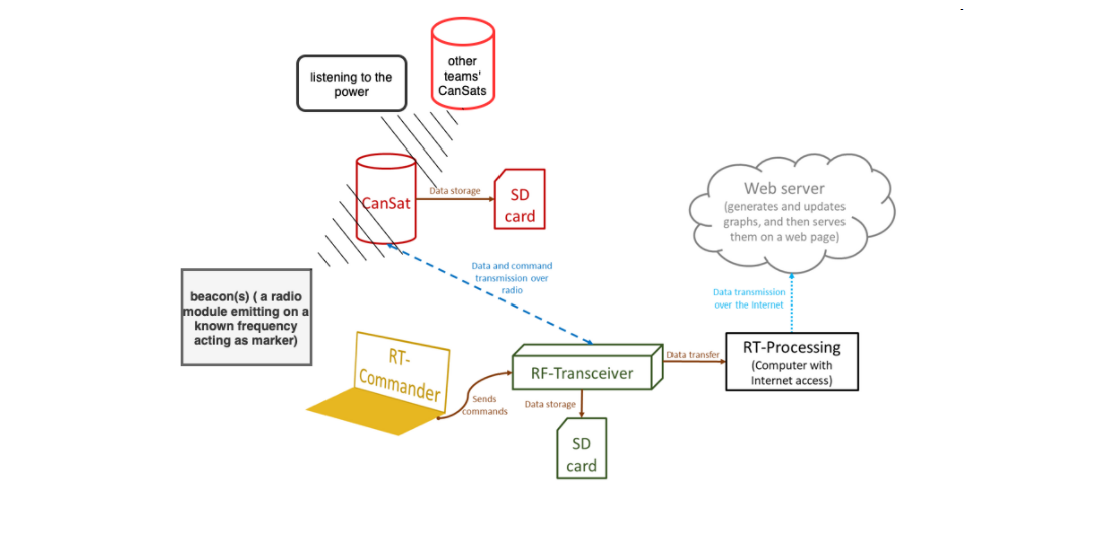Our project
Discover our project: learn more about the specifics of the primary mission as well as the subject of our secondary mission.

System design
Our CanSat system will include a number of subsystems in order to collect and stored the acquired data:
- The can itself acquires data every 70 msec (period still to be confirmed), stores the data on-board (SD-Card) and transmits it to the RF-Transceiver along with location data (GPS, altitude, velocity…).
- The RF-Transceiver is our ground station: it received and stores the acquired data, and sends it to the RT-Processing. It also sends the commands received from the RT-Commander (not during the flight) to the can;
- The RT-Commander is our system control unit. It receives status information and possibly sends commands before and after the flight;
- The RT-Processing receives acquired data and processes it on the fly.

Primary mission
Like every other team, we have a primary mission that consists of measuring the air pressure and temperature, and transmitting it via radio to the ground as well as storing it on an SD card. And after the flight, we will generate temperature, altitude and pressure graphs.
More info about the design of our primary mission.
Secondary mission
We have two secondary missions:
The first secondary mission consists of reducing and adapting the descent velocity by increasing the incident surface of the can with the air with the help of airbrakes.
The other secondary mission is to use the radio communication to estimate the distance between our Cansat and other RF sources.
More info about the design of our secondary mission.
Can design
Our can is 3D printed from a design we develop on Autodesk's Fusion 360 software. This allowed us to efficiently organize the composition of our probe. Inside the main can is a space reserved for the airbrakes (secondary mission). In addition, there is a square window for our GPS module, which needs a view of the sky to receive signals from the probes.
In the lower part of the can, we will place the controlling electronic: a controller board, an SD Card, a GPS, an XBee module, and a battery, and the primary mission sensors. The upper part will be used for the airbrakes and their opening mechanism.